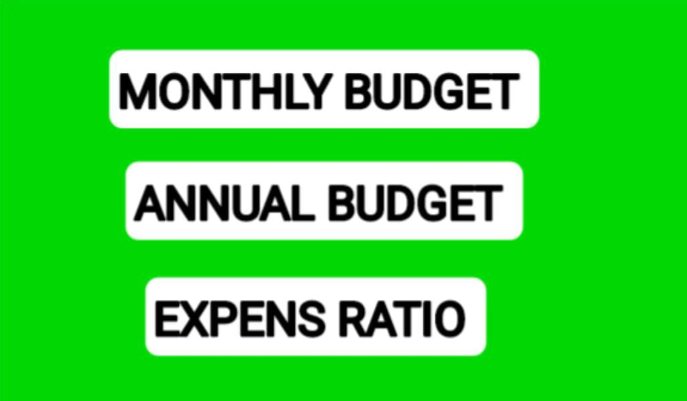Understanding budgets and expense ratios is crucial for effective financial management, whether for individuals or businesses. Here’s a breakdown:
Annual Budget:
* Definition:
* An annual budget is a financial plan that outlines expected income and expenses over a 12-month period. It provides a comprehensive overview of financial goals and strategies for the year.
* It’s a roadmap that helps you allocate resources, track progress, and make informed financial decisions.
* Key Aspects:
* Income Projection: Estimating all sources of revenue, such as salary, investments, or business sales.
* Expense Categorization: Identifying and quantifying all anticipated expenses, including fixed costs (e.g., rent, mortgage) and variable costs (e.g., groceries, entertainment).
* Goal Setting: Aligning the budget with financial objectives, such as saving for retirement, paying off debt, or funding a major purchase.
* Regular Review: Periodically assessing actual performance against the budget and making adjustments as needed.
Monthly Budget:
* Definition:
* A monthly budget is a more granular financial plan that breaks down the annual budget into smaller, more manageable segments.
* It allows for closer monitoring of income and expenses, facilitating timely adjustments and preventing overspending.
* Key Aspects:
* Detailed Tracking: Recording all income and expenses on a monthly basis.
* Expense Control: Identifying areas where spending can be reduced or optimized.
* Flexibility: Adapting the budget to accommodate fluctuations in income or unexpected expenses.
* Consistent Monitoring: Regularly reviewing the monthly budget to ensure it remains aligned with financial goals.
* Relationship to Annual Budget:
* The monthly budget is essentially a subset of the annual budget, providing a more detailed and actionable plan for each month.
* To make a monthly budget from an annual budget, you would divide the annual costs of many things by 12.
Expense Ratio:
* Definition:
* An expense ratio is a financial metric that expresses the percentage of expenses relative to income or assets.
* It’s commonly used to assess the efficiency of businesses, investment funds, and other financial entities.
* Key Aspects:
* Calculation: Expense ratio = (Total Expenses / Total Income or Assets) x 100%
* Interpretation: A lower expense ratio generally indicates greater efficiency and profitability.
* Application:
* In investing, the expense ratio represents the percentage of fund assets used to cover operating expenses.
* In business, it reflects the proportion of revenue consumed by operating costs.
* In personal finance, it can be used to monitor the percentage of income that is being used for specific expense categories.
* Importance:
* Expense ratios provide valuable insights into financial performance and efficiency.
* They help identify areas where costs can be reduced, and profitability can be improved.
In summary, annual and monthly budgets provide structured frameworks for managing finances, while expense ratios offer a quantitative measure of financial efficiency.


There are no reviews yet.